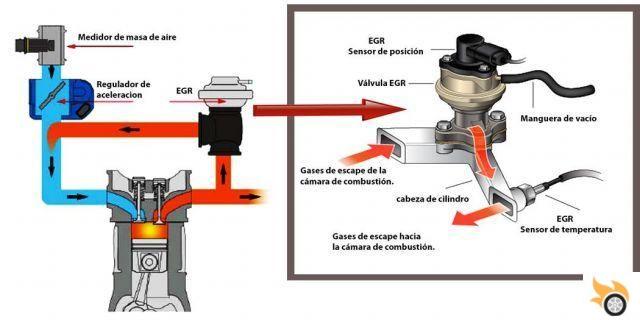
Article about the EGR valve in cars
Welcome to Pistonudos.com, where we take care of providing detailed information on vehicle components. On this occasion, we will enter the world of the EGR valve, a fundamental element in modern cars. Throughout this article, we will respond to the different search intentions that users have about this component.
What is an EGR valve and how does it work?
Let's start by defining what an EGR valve is. The acronym EGR comes from the English Exhaust Gas Recirculation, which in Spanish translates as Exhaust Gas Recirculation. Basically, the EGR valve is a device that allows a part of the exhaust gases of an internal combustion engine to be redirected towards the air intake, mixing them with the fuel and thus reducing polluting emissions.
The operation of the EGR valve is based on opening and closing an escape route for exhaust gases. When the engine is running, the EGR valve is responsible for regulating the amount of gases that are recirculated, depending on the needs of the engine and driving conditions. This helps to reduce the combustion temperature and decrease the formation of nitrogen oxides (NOx), one of the main pollutants emitted by vehicles.
Common problems and clogging symptoms
Although the EGR valve is an important component in reducing polluting emissions, it can also present problems. One of the most common problems is clogging of the valve due to carbon and dirt buildup. This can cause decreased engine performance, increased fuel consumption, and higher emissions.
Some of the symptoms of a clogged EGR valve include a loss of engine power, increased exhaust smoke, rough idle, and activation of the check engine light on the instrument panel. If you experience any of these symptoms, it is advisable to take your car to a specialized workshop to have the EGR valve checked and cleaned if necessary.
Types of EGR valves and their price
There are different types of EGR valves, depending on the design and the technology used. The two most common types are mechanical EGR valves and electronic EGR valves. Mechanical EGR valves are vacuum controlled and use a membrane to open and close the escape path for exhaust gases. On the other hand, electronic EGR valves are controlled by the engine management system and can adjust the amount of recirculated gases more precisely.
As for the price of EGR valves, it can vary depending on the manufacturer and model of the vehicle. In general, the cost of an EGR valve ranges from 100 to 300 euros. It is important to note that in some cases, a clogged EGR valve can be fixed with cleaning rather than complete replacement, which can result in significant savings.
Main functions and reliable sources
In addition to reducing polluting emissions, the EGR valve fulfills other important functions in cars. One of them is the improvement of the engine's efficiency, since by recirculating the exhaust gases, the thermal energy generated during combustion is better used. This can result in lower fuel consumption and increased engine performance.
If you are interested in obtaining more detailed information about the EGR valve, we recommend consulting reliable sources such as RACE (Royal Automobile Club of Spain) and RO-DES (Official Vehicle Registry of the Directorate General of Traffic). These institutions offer glossaries and technical documents that will help you better understand the operation and maintenance of the EGR valve.
Frequent questions
1. What is the lifespan of an EGR valve?
The lifespan of an EGR valve can vary depending on several factors, such as the type of engine, the quality of the fuel used, and driving conditions. In general, it is estimated that an EGR valve can last between 80,000 and 100,000 kilometers. However, it is important to perform proper maintenance and clean the valve regularly to avoid clogging problems and prolong its useful life.
2. Is it possible to remove the EGR valve?
Removing the EGR valve may seem like a tempting solution to prevent clogging issues and improve engine performance. However, it is important to note that removal of the EGR valve may have legal and environmental consequences. In many countries, removal of the EGR valve is prohibited by law and can result in fines and invalidation of the vehicle's warranty. In addition, by eliminating the EGR valve, polluting emissions are increased, which contributes to the deterioration of the environment.
Conclusion
In summary, the EGR valve is an essential component in modern cars to reduce polluting emissions and improve engine efficiency. Throughout this article, we have addressed the different search intentions of users, providing information on the definition, operation, common problems, clogging symptoms, types, price, and main functions of the EGR valve. Remember that it is important to perform proper maintenance of the EGR valve to avoid problems and prolong its useful life.
We hope this article has been useful and has answered your questions about the EGR valve. If you have any other questions or comments, feel free to leave them below. We would love to hear your opinion!
Until next time!
The Pistonudos.com team
The EGR valve and its operation ❯


























